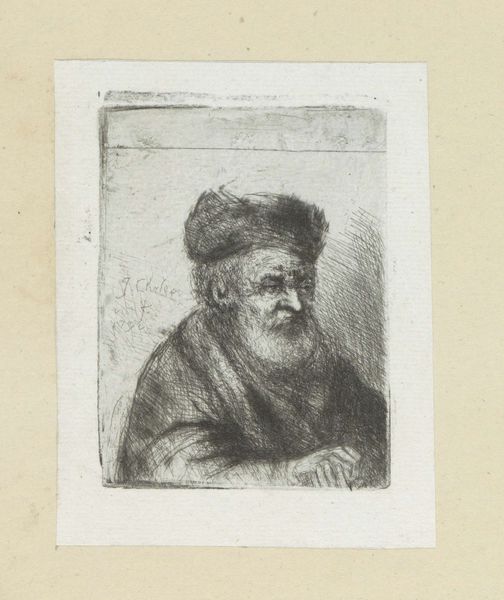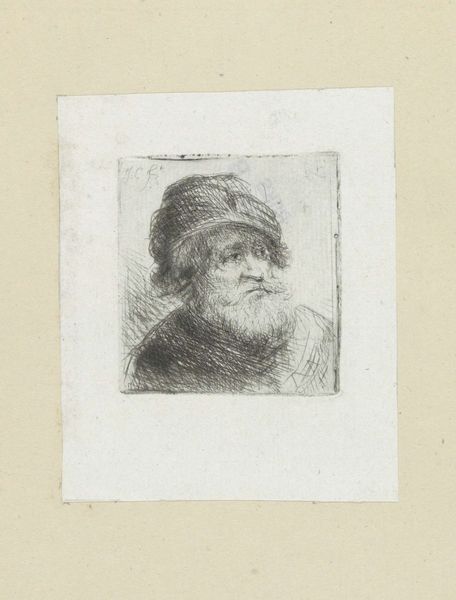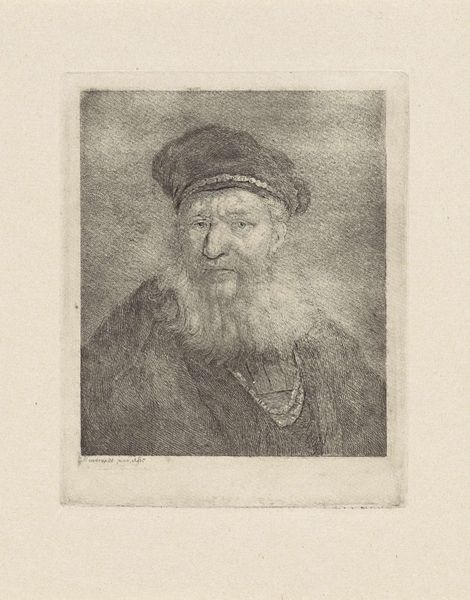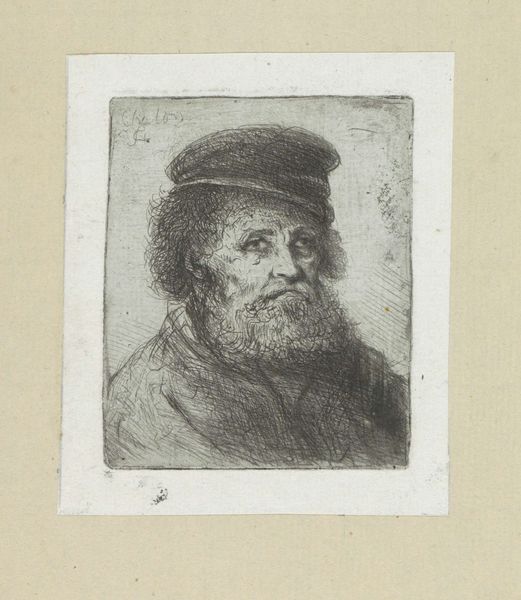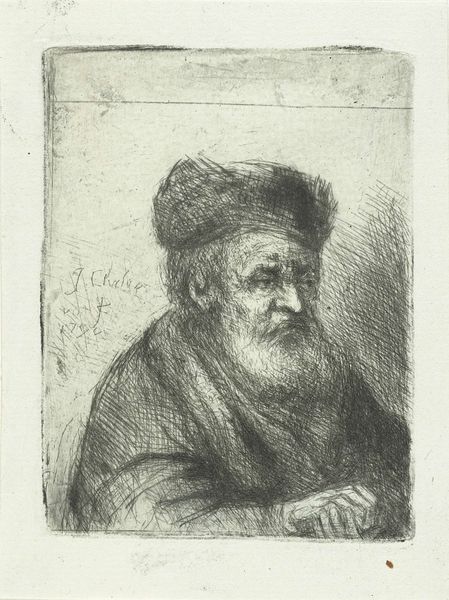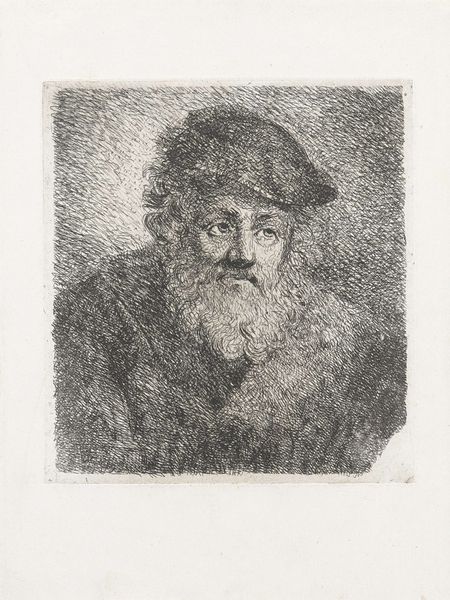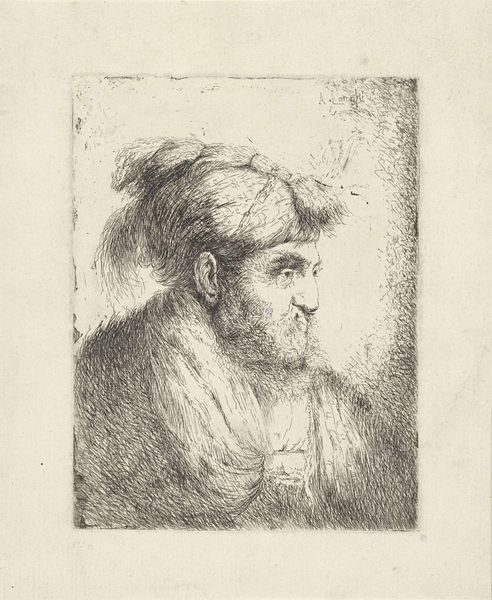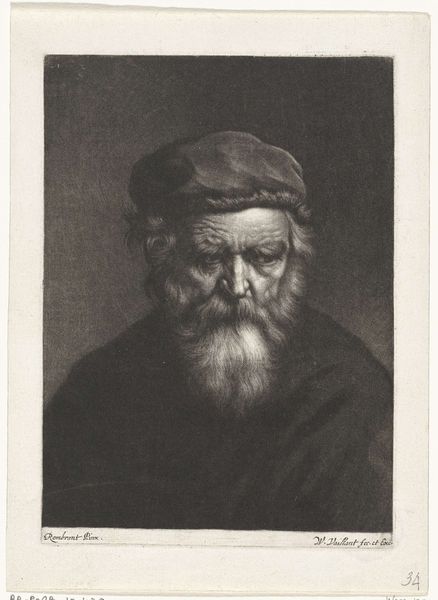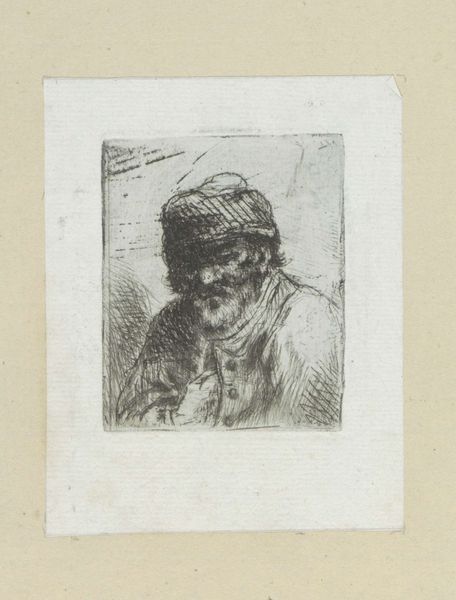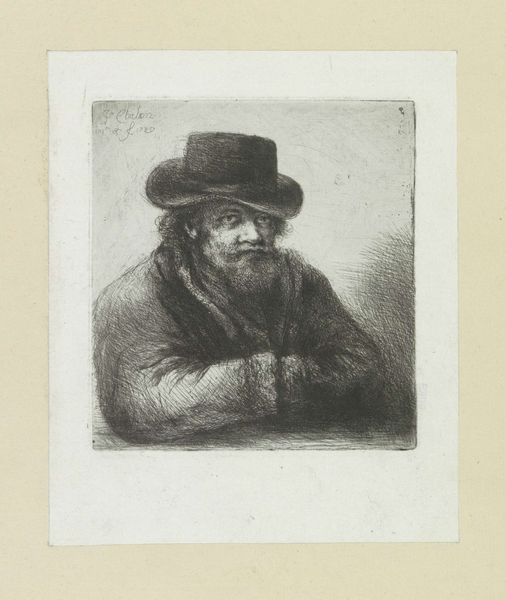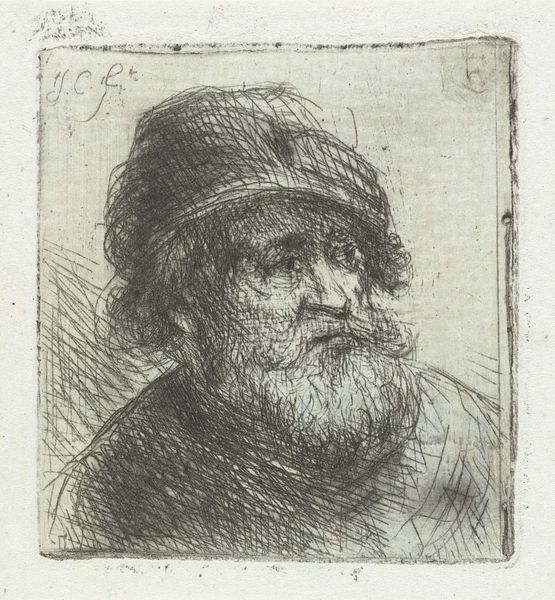
drawing, ink, graphite
#
portrait
#
pencil drawn
#
drawing
#
pencil sketch
#
charcoal drawing
#
ink
#
pencil drawing
#
romanticism
#
graphite
#
graphite
#
realism
Dimensions: height 119 mm, width 97 mm
Copyright: Rijks Museum: Open Domain
Editor: This is Jan Chalon's "Oude man met baard en muts," created in 1802, using graphite, ink, and pencil. It looks like a quick study, maybe preparatory. I am fascinated by the contrast between the roughly sketched figure and the details in the man's face. What's your perspective on it? Curator: For me, the interest lies in the materials themselves and how they relate to the period's artistic production. Consider the use of graphite, ink, and pencil in 1802. These were becoming increasingly available and affordable, shifting drawing from a purely preparatory stage to a valued form of art in its own right. Does Chalon elevate "craft" or maintain a distinction with higher painting? Editor: That's interesting! I never considered the rise of those materials as being tied to its artistic value as the 'finished' work itself, that before it would have just been something to build up to the final product of paint. So the piece itself speaks to industrial production processes already? Curator: Exactly. The choice of readily available, reproducible media—graphite, pencil, and ink—hints at broader social and economic shifts. Think about who would have had access to art, how it was disseminated, and how this particular portrait might have circulated. Editor: So it wasn't just about aesthetics; the means of production were just as important, if not more so, for understanding its significance? Curator: Precisely. This isn’t merely a portrait; it's a document of changing artistic practices and material conditions. It raises the question, what did artistic labor mean at this time, with these newly affordable materials? Editor: I see that now. By focusing on the materials and their accessibility, it shifts my attention away from simply admiring the image to considering its place within the social and economic structures of the time. Curator: Indeed. Now consider what other avenues it suggests in its materials and what that has to tell us about access and value.
Comments
No comments
Be the first to comment and join the conversation on the ultimate creative platform.
